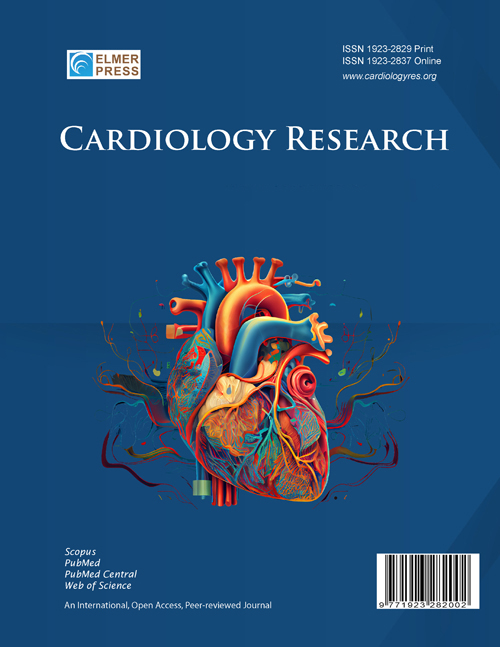Characterization of Intracardiac Flow in the Right Ventricle With Pressure and Volume Overload in Children
DOI:
https://doi.org/10.14740/cr2009Keywords:
Vector flow mapping, Right ventricle, Energy loss, Kinetic energyAbstract
Background: Blood flow visualization using vector flow mapping (VFM) holds potential as a novel indicator of right ventricular (RV) function.
Methods: This study included 12 patients with atrial septal defect (ASD group, mean (± standard deviation) age: 6.2 ± 1.5 years), six patients with pulmonary hypertension (PH group, mean age: 6.8 ± 2.3 years), and 35 healthy, age-matched children (control group, mean age: 7.3 ± 1.6 years). VFM data were obtained from the parasternal RV short-axis view.
Results: VFM images in the majority of the control group showed a counterclockwise rotating vortex below the tricuspid anterior leaflet and clockwise vortex below the septal leaflet in early diastole. In late diastole, a clockwise vortex flow appeared at the RV apex to the outflow tract. In the ASD and PH groups, the formation of vortical flow below the tricuspid valve was decreased. Late-diastolic vortices also differed from the control group, with counterclockwise or no vortex flow seen in this phase in these groups. Flow energy loss (EL), kinetic energy (KE) and energetic performance index (EPI) were related to RV systolic and diastolic functions. Mean EL over one cardiac cycle (ELcycle) was significantly higher in the PH group than in the control group (P = 0.0471). KE of the RV inflow tract (KE-RVin) and outflow tract (KE-RVout) were significantly lower in the PH group than in the control and ASD groups (P < 0.05 each).
Conclusions: These results suggest that RV vortex formation may be a factor in efficient ejection. EL, KE, and EPI may be applicable to evaluate RV contractility and diastolic function.

Published
Issue
Section
License
Copyright (c) 2025 The authors

This work is licensed under a Creative Commons Attribution-NonCommercial 4.0 International License.









